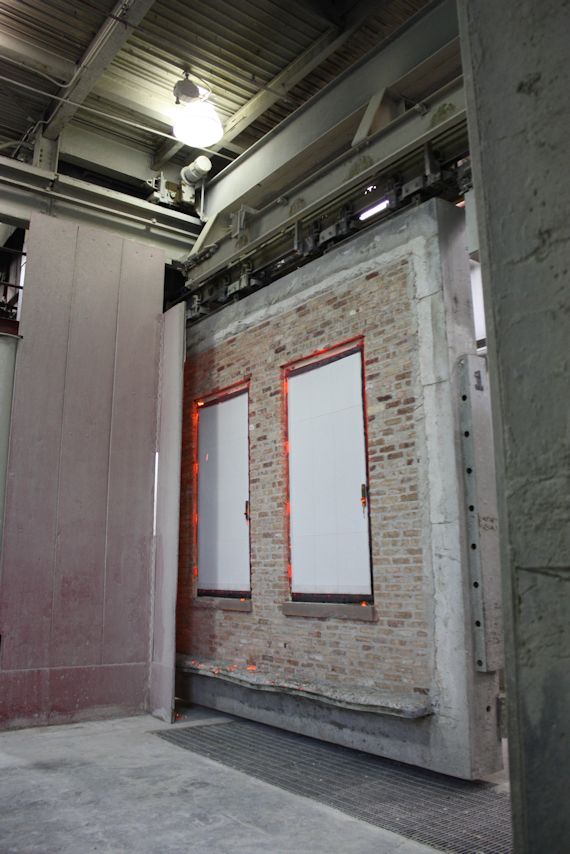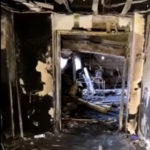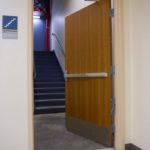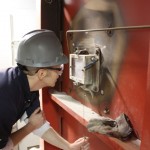Last week I posted the first in a new series of posts, with the goal of delving into some specification sections to try to understand the intent and see where updating is needed. There have been hundreds of projects where I’ve been faced with a specification that was not easy to understand, and I needed to make a decision about how to bid the job. Taking a look at these specification sections and updating them where necessary will help in so many ways during the estimating process!
In last week’s spec section, taken from a real project, there were 3 paragraphs. I addressed one paragraph, and questions arose about another:
 Item C is asking for fire door assemblies that:
Item C is asking for fire door assemblies that:
- Comply with NFPA 80 – Standard for Fire Doors and Other Opening Protectives
- Are listed and labeled by a qualified testing agency for the ratings indicated
- Are tested with a positive pressure test “according to UL 10C (neutral pressure at 40 inches above sill) or UL 10C.”
Some thoughts (feel free to add your own in the comment box):
- In my opinion, it is correct to specify that fire door assemblies must comply with NFPA 80. I’m assuming that there is a section in the spec that includes more information about which referenced standards apply to the project. One thing I want to point out though, is that there is no certification stating that a product conforms to NFPA 80, NFPA 101, the IBC, etc. Although this spec is not asking for that, I just had another request this week to provide such a certification. While a certification of compliance to a code or standard would make it easier to demonstrate conformance with a specification, this certification does not exist.
- Based on this phrase about doors and frames being listed and labeled, I would assume that the required ratings are indicated on the door schedule, which is great! Believe it or not, I’ve worked on some projects where the architect left it up to the door and hardware estimator to decide which ratings to price. This is a recipe for disaster! In addition, a reader asked if requiring hollow metal doors and frames to be listed AND labeled was redundant. Let’s take a look at the NFPA 80 definitions for these terms:
- 3.2.3 Labeled. Equipment or materials to which has been attached a label, symbol, or other identifying mark of an organization that is acceptable to the authority having jurisdiction and concerned with product evaluation, that maintains periodic inspection of production of labeled equipment or materials, and by whose labeling the manufacturer indicates compliance with appropriate standards or performance in a specified manner.
- 3.2.4* Listed. Equipment, materials, or services included in a list published by an organization that is acceptable to the authority having jurisdiction and concerned with evaluation of products or services, that maintains periodic inspection of production of listed equipment or materials or periodic evaluation of services, and whose listing states that either the equipment, material, or service meets appropriate designated standards or has been tested and found suitable for a specified purpose.
- Annex A of NFPA 80 further states: A.3.2.4 Listed. The means for identifying listed equipment may vary for each organization concerned with product evaluation; some organizations do not recognize equipment as listed unless it is also labeled. The authority having jurisdiction should utilize the system employed by the listing organization to identify a listed product.
- NFPA 80 also states: Listed items shall be identified by a label. This section of NFPA 80 includes specifics on what is to be included on the label, where the labels are to be installed, etc.
Given these definitions, I wouldn’t say that the spec isn’t really redundant, or NFPA would be redundant also as it requires listed items to be identified by a label (listed AND labeled). Based on the excerpts above, all components of a fire door assembly are required to be listed (with the exception of items of a generic nature or components that are specifically exempt). The labels required for most components of a fire door assembly show compliance with the published listings. (Tell me if you think I’ve got this wrong!)
- I think the last portion of this paragraph needs some revisions. It is correct in stating that positive pressure testing is required, assuming that the International Building Code (IBC) is the adopted code. While NFPA 101 allows several types of tests to be used, the IBC requires positive pressure testing. The issue with the wording here is that the UL 10C test standard is shown twice, once with the notation: “neutral pressure at 40″ above sill” and once without the notation. The notation is intended to require a positive pressure test based on the position of the neutral pressure plane, but this qualification is not needed with regard to UL 10C. This test standard is called Standard for Positive Pressure Fire Tests of Door Assemblies, and automatically places the neutral pressure plane at 40 inches OR LESS above the sill. The other test standard that is allowed by the IBC is NFPA 252, and since this test can be used for positive pressure or neutral pressure doors, the location of the neutral pressure plane needs to be specified:
-
- Past editions of the IBC specifically referenced the 40-inch location (or less) with regard to NFPA 252: Side-hinged or pivoted swinging doors. Fire door assemblies with side-hinged and pivoted swinging doors shall be tested in accordance with NFPA 252 or UL 10C. After 5 minutes into the NFPA 252 test, the neutral pressure level in the furnace shall be established at 40 inches (1016 mm) or less above the sill.
- Current editions of the IBC reference the positive pressure method with regard to NFPA 252: Side-hinged or pivoted swinging doors. Fire door assemblies with side-hinged and pivoted swinging doors shall be tested in accordance with NFPA 252 or UL 10C. For tests conducted in accordance with NFPA 252, the fire test shall be conducted using the positive pressure method specified in the standard.

The bottom line here is that the specification should require testing in accordance with UL 10C – with no reference to the neutral pressure plane location, and testing in accordance with NFPA 252 – with either a reference to the neutral pressure plane location or to the positive pressure method specified in the standard.
If you have made it all the way to the end of this post, BRAVO! If not, this information will be here waiting when you need this question answered. Someone posted on LinkedIn the other day that I had answered his question 5 years before he had asked it, when he found what he needed in an old post on iDigHardware. This makes me so happy!
Please send me any spec sections where we can learn from suggestions for updating…a rising tide lifts all boats!
You need to login or register to bookmark/favorite this content.










Hi Lori.
This was a great post, thank you. I think the statement “fire door assemblies must comply with NFPA 80” is OK but I prefer to rephrase the IBC 716.1 wording and write “fire door assemblies shall be installed in accordance with NFPA 80.” Using “Shall” when we want the contractor to do something helps make the spec easier to read, and what we are actually asking in this sentence is that the materials- frames, doors, hardware- are installed following NFPA 80.
Others may disagree- and they may be right! In addition to installation, NFPA 80 guides in materials selection- for example steel hinges. I’m following the principle of saying something once and saying it in the right place. Material details should be in part 2 for the specific material: Hollow metal, a hardware item, etc.
You make a good point about the labeling requirements being clear in NFPA 80. I believe these are covered in the IBC definition of “listed” and “label,” and the IBC wording takes people to the section 17 which I find quite helpful.
As for the ratings, it’s the contractors responsibility- typically passed on to the door supplier- to follow the minimum assembly ratings in the code regardless of what mistakes the Architect makes on the schedule. Someone on the contractor side needs to review the fire and life safety plans, they can’t rely on the door schedule.
Again, others may disagree and I may change my mind based on comments.
Thank you,
Lloyd
Thanks Lloyd!
Even though I was a specwriter, specwriting was never my one true love, so you may be right about using the language from the IBC and requiring fire door assemblies to be installed in accordance with NFPA 80. We’ll see if anyone else chimes in!
– Lori